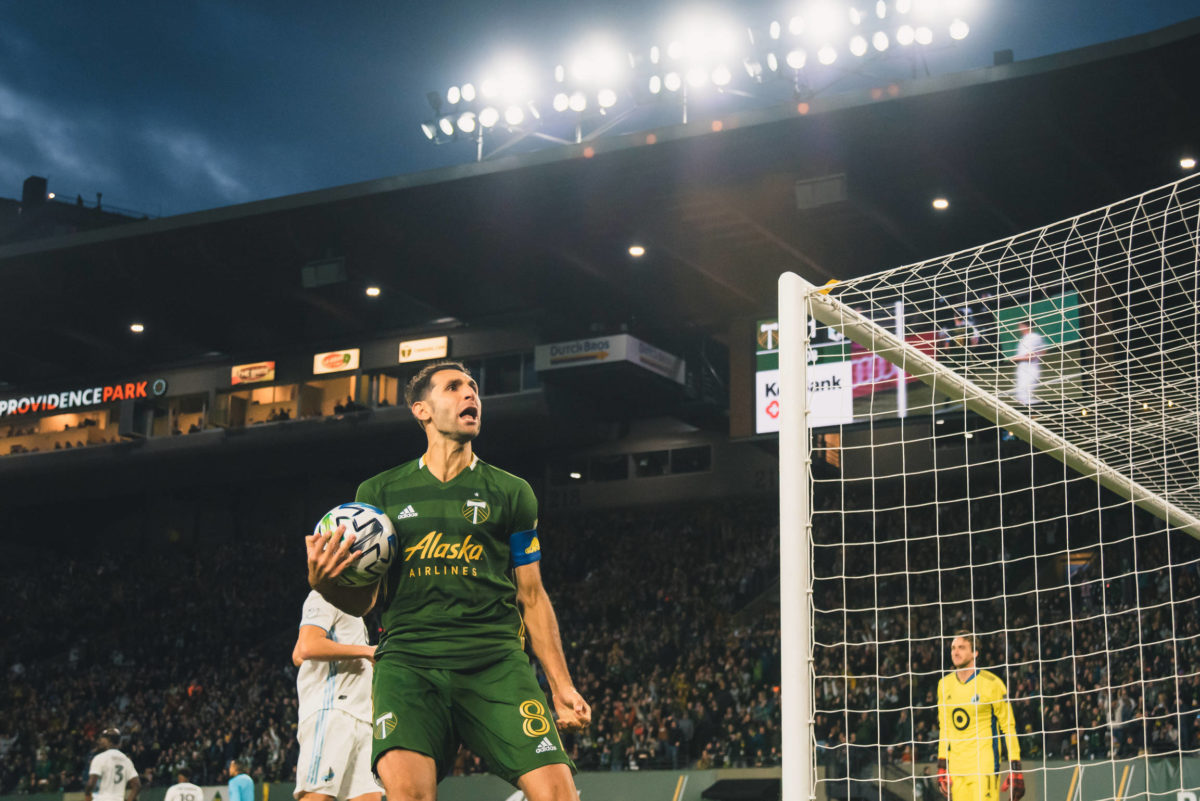What makes a club good at developing and fostering talent?
It’s a simple question, yet one that seems to have a complex answer. How can a franchise help young, budding talent improve and ultimately thrive at the MLS level and beyond? Is it by having a large scouting network that can unearth talent seemingly anywhere in the world, like New York City FC or New York Red Bulls? Is it consistently giving younger players a majority of the minutes (#playyourkids), a la FC Dallas or Real Salt Lake? Or is it something else?
When it comes to youth development, the Portland Timbers may not be the first club that comes to mind, but what they are good at is establishing an identity that is upheld throughout the organization.
Employing a similar style of play at each level of the organization establishes a consistency for players who often find themselves on the bubble between the first and second teams. While the concept of a team’s tactical identity, top to bottom, is used in a club setting, it’s a more prevalent point of discussion when it comes to the international game. With player movement so much more fluid in, say, the United States player pool, players such as Ulysses Llanez or Giovanni Reyna need to be ready to slide right into the senior side from the youth setup when called upon.
Some coaches prefer every level of the organization to run an identical tactical setup and style while others are more flexible, allowing younger sides to adjust how they play based on personnel or their own established identity. The Timbers want to be somewhere in between.
Like any MLS team, Portland has a defined style of play that holds up from the academy to the MLS side. Over the past few seasons that style has consisted of attacking through wide channels, finding attackers in the box off of crosses, dominating the midfield, and, when the opportunity arises, countering like crazy. With a few minor adjustments based on personnel, that is how Timbers 2 (T2) wants to play as well.
“We strive to mirror what the first team does,” head coach Cameron Knowles said. “I think it’s important that when a first-team player comes to us, the things we’re asking them to do in the game make sense. When a T2 player goes and trains with the first team, they understand their role as it relates to the team.
“…I don’t think we try to deviate too far from that, but obviously, with playing in a league and playing for points, week to week we have to come up with a plan to win a game and that’s where things can differ. In training and a lot of the principles of play, I think there is a lot of consistency from the top-down throughout the club.”
At times, what makes playing similar styles exceptionally difficult is the lack of consistency in the roster. While the first team is afforded the luxury of meticulously planning for the game ahead while adjusting to any tactical wrinkle, T2 often sends players up a level to train while receiving an academy player or two for training themselves. With that being the case, it is imperative for those T2 call-ups to know what to expect at a Savarese practice versus at a Knowles practice.
“The last two years we have been pretty flexible tactically, anyone who watches [the Timbers] will be able to notice that,” Jeremy Ebobisse said when asked about the major tactical differences between T2 and the first-team. “We’ve played a 4-2-3-1, a 4-3-3, a 4-3-2-1, a diamond, two up top. It’s hard to mirror that if you’re the second team. The first team is planning based on personnel and based on the opponent ahead.
He added: “Themes are pretty similar: defend, protect the middle, take advantage of your chances going forward if it’s on the counter or in the build-up phase. It’s largely similar, but how we go about them sometimes is going to differentiate.”
What that means is that, sometimes, a shift in tactics will be necessary to win the game. For example, playing fast and in transition is great, but against a team such as Phoenix Rising or even New Mexico United that can exploit that suddenly available space, it’s not ideal. In games that come down to those pivotal tactical audibles, Knowles will not be afraid to scrap the plan and play directly to his player’s strengths.
“It goes both ways,” Eryk Williamson said. “I know that usually, it’s ‘This is what’s being asked of you, go do this,’ and at the same time [Knowles] is a head coach who wants to win and I really appreciate it.
“…He says ‘I know this is what is being asked of you, but we’re playing Phoenix Rising where now, it’s a habit. We cannot mirror what the first team is doing, now we need to go out and try to win this game.’ That’s a huge part of being flexible as well, it’s not ‘Oh, can I just go out there and personally do well,’ but can you have the right mentality to go out and do well in every game that you play in.”
At the end of the day, having the flexibility to quickly shift tactics is beneficial. But it is also important to monitor how everything comes together on the field. Maintaining those tactical similarities helps with player adjustment and is something that the Timbers and T2 want to accomplish this season, but, if necessary, Knowles is not afraid to change anything up. It will be interesting to see how that plays out as the season progresses.

